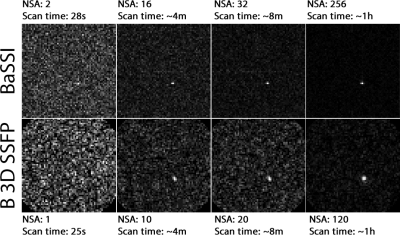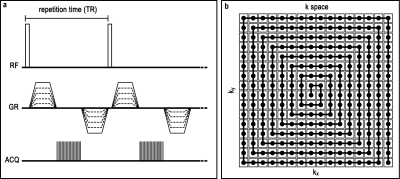Muhammed Yildirim1,2, Patrick Scholtz2, Markus Schütz2, Xenia Kovalyk2, Edwin Heijman2,3, Rolf Lamerichs3, Holger Grüll2, and Esin Ozturk Isik1
1Computational Imaging Lab, Institute Of Biomedical Engineering, Bogazici University, Istanbul, Turkey, 2Institute of Diagnostic and Interventional Radiology, Faculty of Medicine and University Hospital of Cologne, University of Cologne, Cologne, Germany, 3Philip Research Labs, Eindhoven, Netherlands
1Computational Imaging Lab, Institute Of Biomedical Engineering, Bogazici University, Istanbul, Turkey, 2Institute of Diagnostic and Interventional Radiology, Faculty of Medicine and University Hospital of Cologne, University of Cologne, Cologne, Germany, 3Philip Research Labs, Eindhoven, Netherlands
Following a long period of dismissal, 19F spectroscopic imaging strikes back with BaSSI, a balanced sequence with spiral k-space trajectory. The sequence records a sensitivity of 63 μmol-1min-1/2; which is 25% better than the 3D-balanced-UTE-SSFP sequence , the golden standard of 19F MRI.

Detection sensitivity and image quality comparison of balanced spiral spectroscopic imaging and 3D balanced UTE SSFP using a 0.1μl sample of PFOB. The spectroscopic imaging sequence is capable of detecting the sample with NSA=1, whereas the imaging sequence starts picking up the signal with higher NSA's. In terms of image quality, spectroscopic imaging shows significantly less spreading than its imaging counterpart, offering accurate localization of the target.

